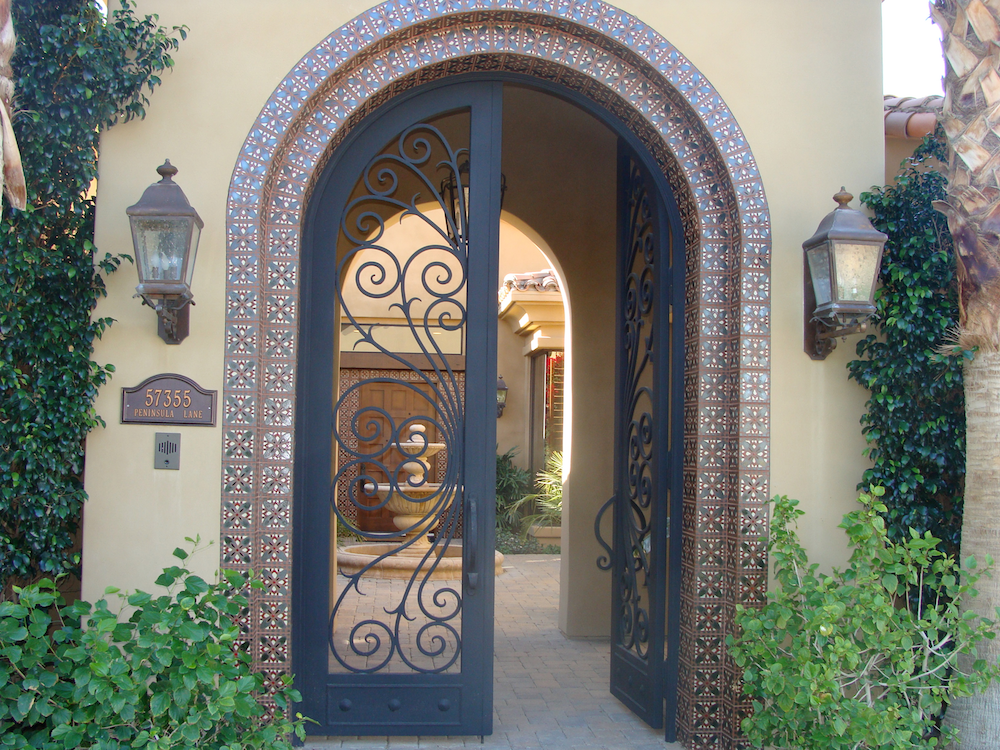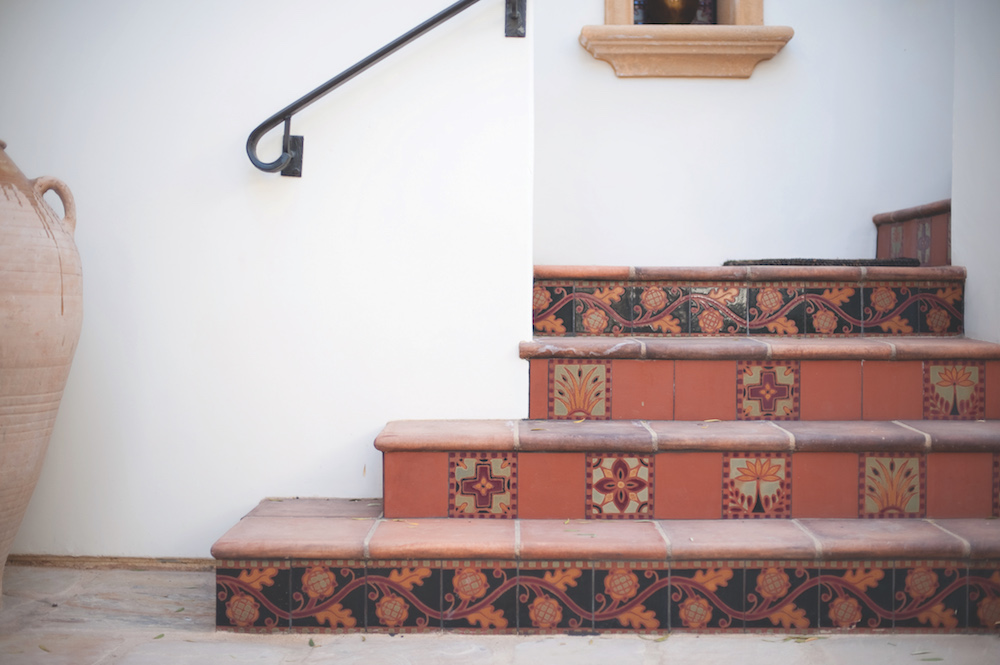Two trends drive the tile industry today, and they could not be more divergent. One’s powered by technology; the other’s all about authenticity. And they’re both moving forward at full speed.
Visitors to any of the thriving tile factories in the Emilia-Romagna and Sassuolo regions of Italy won’t hear human voices on the factory floor today. Instead, the dominant sound is the steady hum of robotics turning clay into large-format porcelain tile. The mass-produced patterns mimic the look of natural stone and sell at a lower price point. At Cersaie, Bologna’s sprawling trade show for tile, they’re all the rage.
New Ravenna Mosaics
Robotics aside, the more intriguing development in today’s tile industry is the ascendancy of the human touch. Coast to coast in the U.S., artisans are creating tiles, stones, and mosaics with a natural, enchanting quality. “People want to know the story behind what they’re buying,” says Sara Baldwin, owner of New Ravenna Mosaics on Virginia’s Eastern Shore. “We like to say our surfaces have soul because you can see the mark of the craftsperson in every square foot you order.”
.jpg)
.jpg)
New Ravenna is thriving in the little town of Exmore as it restores five downtown buildings, including an Art Deco movie theater, former shirt factory, and Dollar General store. It’s the town’s largest employer, with 120 dedicated artisans designing, assembling, and shipping orders daily.
Every week, a new container with 7,500 square feet of stone from Greece, Spain, China, Turkey, Tunisia, Italy, and Macedonia arrives. That adds up to about 90 different kinds of stone and a standing inventory of 250,000 square feet. Meanwhile, 7,500 square feet of assembled mosaics move out the door weekly. “We ship 25 to 30 orders a day,” Baldwin says. “There are about 350 sample orders a month.”
.jpg)
.jpg)
Baldwin’s tiles and mosaics come with their own character because each is created by human hands. “There’s a search for authenticity that people want to put in their homes—not porcelain that looks like marble, but actual stone,” she contends.
As the recent trend toward a gray-and-white palette wanes, Baldwin anticipates a rise in popularity for black, white, and gold. And she’s beginning to look to heavenly bodies for design inspiration. “We’ve spent a lot of time in the last couple of years working on earthly patterns, but now we’re looking up to the sky, inspired by stars and planets,” she says.
Three-dimensional mosaics are growing in popularity too. “We’re selling a lot of the Coliseum pattern in the Dimensioni Collection,” she says. “They’re 3-D with a texture on the surface that’s a centimeter or two thick and pieces of stone that protrude.” newravenna.com
Metolius Ridge Artisan Tile
Out in Bend, Oregon, inside the Metolius Ridge Artisan Tile studio, artist Justyn Livingston’s operation is modest, as she mixes stripes with dots to create large-scale geometric and floral patterns. A former textile designer for Esprit, she once operated a larger 6,500-square-foot studio with two employees, but scaled it back. “I was like, How many tiles do I have to make to support it all?” she says. “I decided to go the other way and simplify.”


She calls her designs rural-rustic. Her collections are based on familiar, universal patterns and travels to Romania, Europe, and Mexico. Anything is fair game for inspiration, from African textiles to a 1966 Vogue magazine layout featuring abstract expressionist Cy Twombly in his Rome apartment, and much more. “The old, classic Hawaiian patterns are beautiful,” she says. “But what I look at most are antique Japanese kimono patterns from a book called Tsujigahana: The Flower of Japanese Textile Art by Toshiko Ito.”


Livingston eschews trends, preferring to focus on timelessness in her designs for doorways, alcoves, and fireplaces. “It’s my personal view of sustainability,” she explains. “I’d like for people to install it and love it for 50 years—not to remake it.”
Her clients like the personal nature of her work. “People are concerned about where something is made, how it’s made, and who’s benefitting,” she says. “They don’t want to show their friends pictures of the machines that made their product.” metoliusridgeartisantile.com
CLÉ
At clé, the San Francisco-based provider of artisanal tile, cement tiles are picking up a head of steam. They’re a bold, non-fired material that owner Deborah Osburn sources locally and pushes out to the marketplace. Her striking patterns have become increasingly prevalent and a movement unto themselves.
“They grew out of an interest in cement as a natural material and the gentrification of urban areas where people were living in lofts with old brick and cement,” she says. “Then we started to promote it, and it kind of exploded, and now we’re sitting in the heart of a major trend.”
.jpg)
.jpg)
Established in 2012, clé focuses on handmade tiles by Osburn and her rapidly growing stable of artisans working in various media. “If you saw the roster of tiles we are launching—the waiting list is very long,” she says. “There’s so much delicious stuff out there; it’s very inspiring to me.”
Among the artist creations offered by clé are Peggy Wong’s 12-inch by 12-inch slabs of snow-white Greek Thasos marble, lithographed in dreamy, abstract patterns; Timorous Beasties’s whimsical collection that looks like giant Rorschach tests; and the surf-inspired Tides collection by artist-in-residence Luca Osburn.
.jpg)
.jpg)
The newest collection at clé, called Eastern Earthenware, is by an Asian artisan whose family has been making tiles for generations. It comes in yellows, reds, pinks, browns, blacks, and blues—“There’s a variety of color in a Raku sensibility, and she’s developing more colors like lavenders, purples, and more,” says Osburn. “It’s still in its infancy.”
While large-format porcelain tiles are dominating international trade shows, artisan tiles, with their authentic, human touch, are taking their preferred place in living spaces, indoors and out. They’re starting to look like the wave of the future. cletile.com
Photos courtesy of the manufacturers


